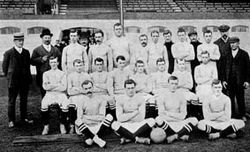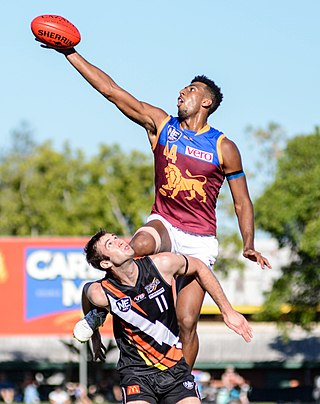
Australian rules football, also called Australian football or Aussie rules, or more simply football or footy, is a contact sport played between two teams of 18 players on an oval field, often a modified cricket ground. Points are scored by kicking the oval ball between the central goal posts, or between a central and outer post.
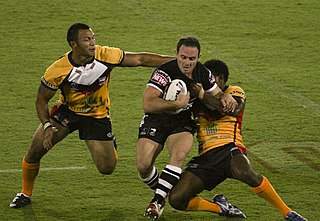
Rugby league football, commonly known as rugby league in English-speaking countries and rugby XIII in non-Anglophone Europe and South America, and referred to colloquially as rugby, football, footy or league in its heartlands, is a full-contact sport played by two teams of thirteen players on a rectangular field measuring 68 m (74 yd) wide and 112–122 m (122–133 yd) long with H-shaped posts at both ends. It is one of the two major codes of rugby football, the other being rugby union. It originated in 1895 in Huddersfield, Yorkshire, England, as the result of a split from the Rugby Football Union (RFU) over the issue of payments to players. The rules of the game governed by the new Northern Rugby Football Union progressively changed from those of the RFU with the specific aim of producing a faster and more entertaining game to appeal to spectators, on whose income the new organisation and its members depended.

Gaelic football, commonly known as simply Gaelic, GAA or Football is an Irish team sport. A form of football, it is played between two teams of 15 players on a rectangular grass pitch. The objective of the sport is to score by kicking or punching the ball into the other team's goal or between two upright posts above the goal and over a crossbar 2.5 metres above the ground.
Touch is a variant of rugby league that is conducted under the direction of the Federation of International Touch (FIT). Though it shares similarities and history with rugby league, it is recognised as a sport in its own right due to its differences which have been developed over the sport's lifetime.
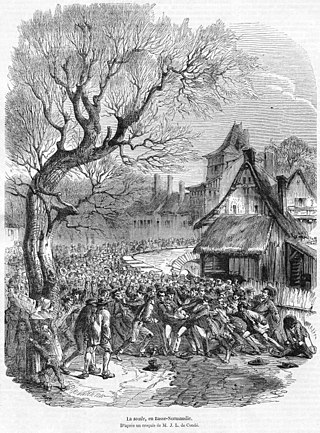
The history of rugby union follows from various football games long before the 19th century, but it was not until the middle of that century that the rules were formulated and codified. The code of football later known as rugby union can be traced to three events: the first set of written rules in 1845, the Blackheath Club's decision to leave the Football Association in 1863 and the formation of the Rugby Football Union in 1871. The code was originally known simply as "rugby football". It was not until a schism in 1895, over the payment of players, which resulted in the formation of the separate code of rugby league, that the name "rugby union" was used to differentiate the original rugby code. For most of its history, rugby was a strictly amateur football code, and the sport's administrators frequently imposed bans and restrictions on players who they viewed as professional. It was not until 1995 that rugby union was declared an "open" game, and thus professionalism was sanctioned by the code's governing body, World Rugby—then known as the International Rugby Football Board (IRFB).
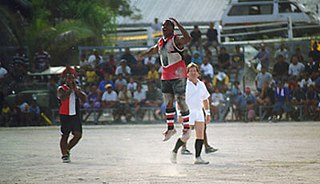
The Geography of Australian rules football describes the sport of Australian rules football played in more than 60 countries around the world. By 2017 more than 26 nations had contested the Australian Football International Cup, the highest level of worldwide competition.

Australian rules football in Queensland was the first official football code played in 1866. The Colony of Queensland was the second after Victoria to adopt Australian rules football, just days after the rules were widely published. For two decades it was the most popular football code, however a strong desire for representative football success saw Queenslanders favour British football variants for more than a century. As a result, Queensland is one of the two states to the east of the Australian cultural divide described as the Barassi Line. 120 years later in 1986 Queensland was the first state awarded a licence to have a club, the Brisbane Bears, in the national (AFL) competition, also its first privately owned club. However the Gold Coast based Bears had a detrimental effect until the 1993 redevelopment of the Brisbane Cricket Ground (Gabba). In contrast the Bears transformation into a Brisbane and traditional membership based club resulted in enormous growth, and a tripling of average AFL attendances by 1996.

Rugby union in Australia has a history of organised competition dating back to the late 1860s. Although traditionally most popular in Australia's rugby football strongholds of New South Wales, Queensland and the ACT, it is played throughout the nation.

Australian rules football in New South Wales is a team sport played and observed in the Australian state. It dates back to the colonial era in 1866, with organised competitions being continuous since the 1880s. Today, it is popular in several regions of the state, including areas near the Victorian and South Australian borders—Riverina, Broken Hill, and South Coast. These areas form part of an Australian cultural divide described as the Barassi Line. To the east of the line, it is known as "AFL", named after the elite Australian Football League competition. AFL NSW/ACT is the main development body, and includes the Australian Capital Territory.
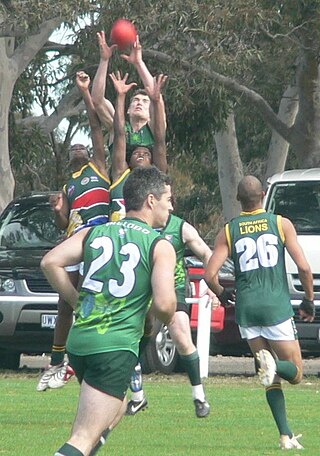
Australian rules football in Ireland began in 1999 when clubs were simultaneously formed in Dublin and Belfast, however awareness of Australian rules football dates back to the 20th century due to similarities with Gaelic football and the country subsequently became a source of players for professional leagues in Australia, particularly the Australian Football League (AFL) and later the AFL Women's (AFLW) through the Irish Experiment which is ongoing. It is governed by AFL Ireland which is a member of AFL Europe.
The following is an alphabetical list of terms and jargon used in relation to Gaelic games. See also list of Irish county nicknames, and these are very interesting.
Rugby Union South Australia (RUSA) is the governing body for the sport of rugby union in the state of South Australia. It is a member of Rugby Australia and runs an amateur club competition in Adelaide consisting of men's teams in Premier grade, Premier reserves, Division 2 and Division 2 reserves; and junior teams grouped by age from under 7 to under 18. As of 2013, a women's competition has been included. The RUSA also selects representative teams each year to compete against other Australian states and territories.

Australian rules football and Gaelic football are codes of football, from Australia and Ireland respectively, which have similar styles and features of play. Notably both are dominated by kicking from the hand and hand passing as well as rules requiring the ball is bounced by a player running in possession, both have a differentiated scoring system, with higher and lower points values for different scoring shots, both have no offside rule, and both allow more physical contact and players on the field than other football codes - 15 in gaelic football, 18 in Australian Rules.
Variations of Australian rules football are games or activities based on or similar to the game of Australian rules football, in which the player uses common Australian rules football skills. They range in player numbers from 2 up to the minimum 38 required for a full Australian rules football.

Rugby union in Queensland has traditionally been one of the most popular professional and recreational team sports in the state. Rugby union was introduced in the British colony's capital Brisbane in 1876. Initially it struggled to gain a foothold due to the popularity of Australian rules there until it got its break in 1882 with the first inter-colonial matches against New South Wales, and the formation of the Northern Rugby Union. Between 1885 and 1887 it became the dominant code after the leading schools association decided to play it exclusively and after 1890 spread virtually unopposed throughout the colony.

Football is a family of team sports that involve, to varying degrees, kicking a ball to score a goal. Unqualified, the word football normally means the form of football that is the most popular where the word is used. Sports commonly called football include association football ; Australian rules football; Gaelic football; gridiron football ; International rules football; rugby league football; and rugby union football. These various forms of football share, to varying degrees, common origins and are known as "football codes".
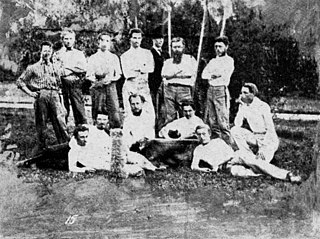
The earliest known records of regular soccer games in Brisbane date from the early 1880s, when a group comprising mostly Scottish immigrants commenced playing at Queen's Park, adjacent to Alice and Edward Streets in the city and vacant land in Melbourne Street South Brisbane, between Grey and Stanley Streets. This group of players subsequently formed the Anglo-Queensland Football Association in early 1884, and commenced playing fixtures at the sports field behind the Pineapple Hotel, in Main Street Kangaroo Point, and at Queen's Park, in June 1884.

A comparison of Gaelic football and rugby union is possible because of certain similarities between the codes, as well as the numerous dissimilarities.
The Queensland Football Association (QFA) was the first governing body for football in the Colony of Queensland founded on 30 April 1880. Its role was primarily to facilitate club and representative matches primarily in Australian rules football but also in Rugby union.
